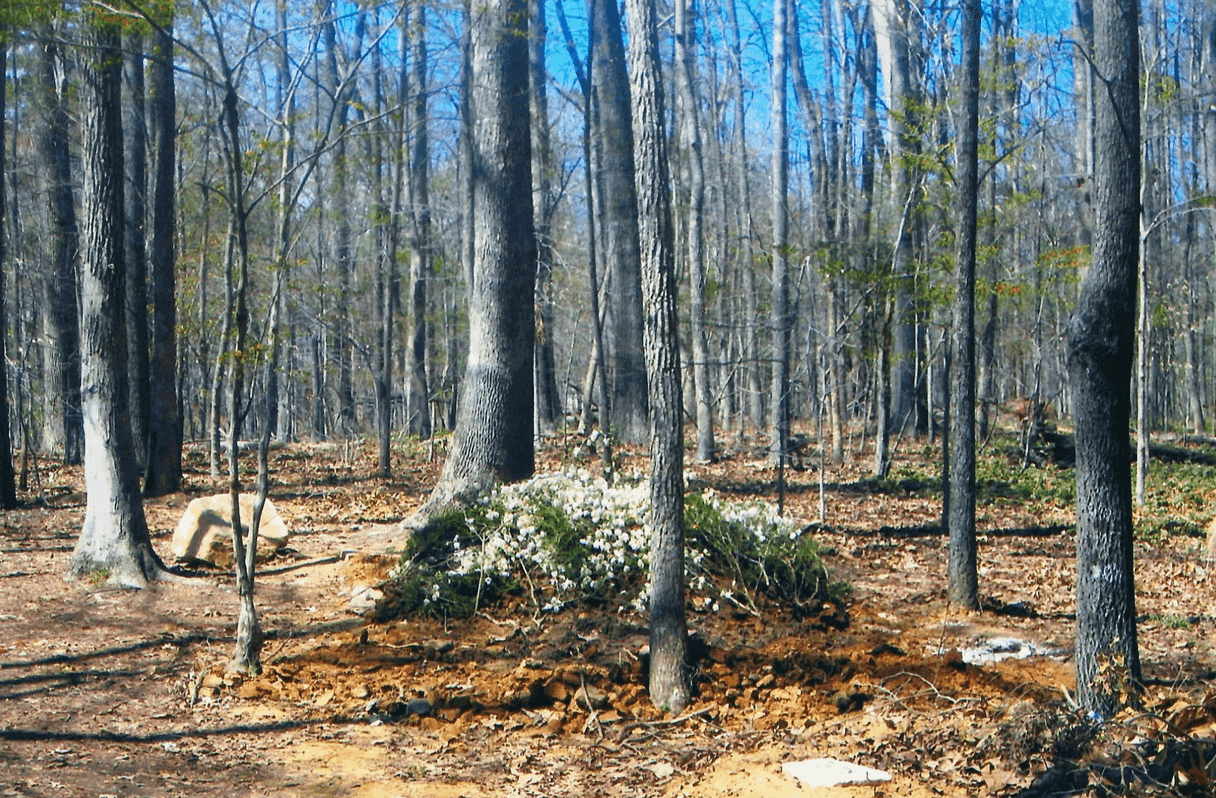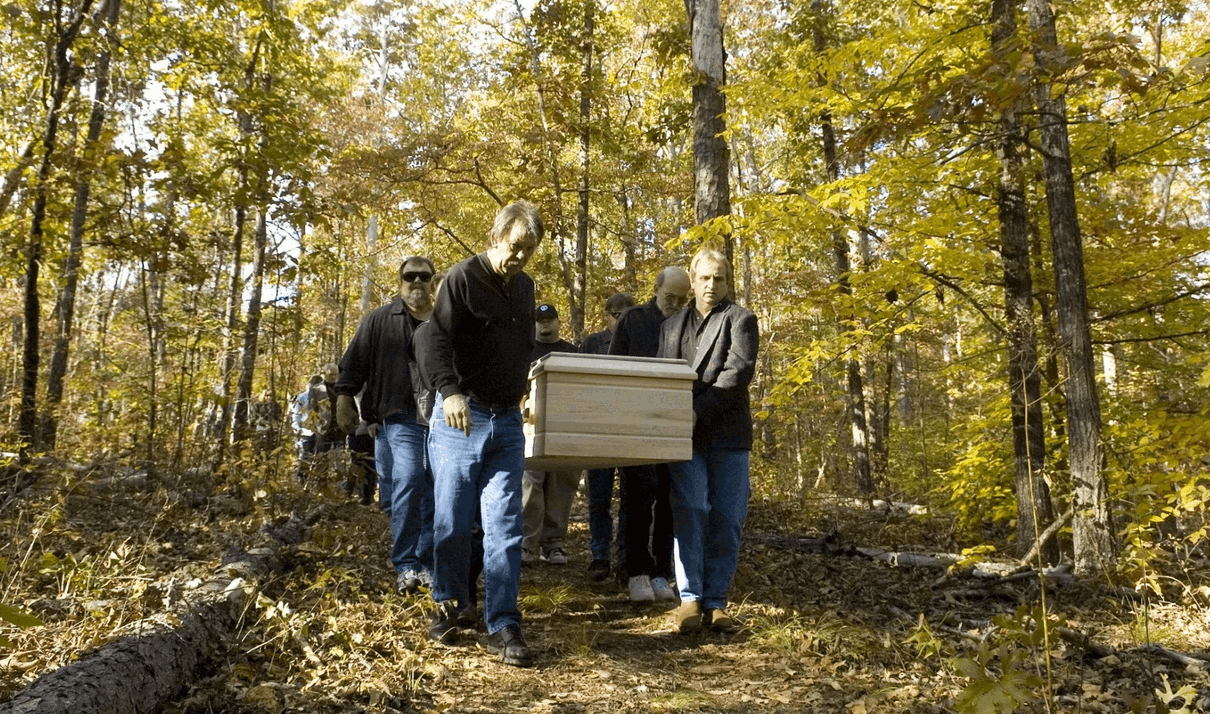Debunking Myths: Green Burial Series Part 3
With the increased attention on green burial, and death in general lately, there is bound to be some confusion. It doesn’t help that every state and province have their own set of rules and regulations when it comes to handling the dead. Over the past few years we’ve received numerous questions from you about what you are or are not allowed to do with bodies, including green disposition. With this in mind, we present to you part three of our Green Burial Series, where Ellen Newman of the Green Burial Society debunks common myths and misconceptions about green burial.

1. Green Burial is illegalGreen burial is legal in all 50 states and in all Canadian provinces. Generally, all funeral homes and cemeteries in all jurisdictions in North America are required by law to offer direct disposition services, including direct burial, where there is no embalming. If a bio-degradable casket is chosen – like a cardboard container or a plain wood casket with no metal, and there is no vault or grave-liner used, that would technically be considered a green burial. Embalming is not legally required, unless a body is being transported across state or provincial borders, or internationally (in some states a body must be embalmed or refrigerated within a specified time).However, each individual cemetery will have its own by-laws, and those by-laws will dictate what types of burials can take place there; which means that a cemetery may not allow a green burial, even if it is legal in the jurisdiction where the cemetery is located. Call your local cemetery to see if green burial is permitted! Photo: Via https://pineforestmemorial.com
2. All burials must have a concrete vaultA vault or grave liner is a concrete box, often lined with a toxic polymer. The casket is placed within the vault and the vault is buried with the casket in the grave. The primary purpose of the vault is to protect the cemetery grounds, as it will prevent the formation of a depression in the earth when a casket exposed to the soil and moisture underground eventually collapses. Whether or not a vault is required is generally dependent on cemetery by-laws.A green or natural burial ground will likely have a by-law that prohibits vaults or grave liners. A traditional cemetery may have a section where no vaults are required, or only require them if a “double depth” grave is purchased – where a casket buried at the lower depth would need to be in a vault. Again, it is best the check with your local cemetery to determine their particular by-laws.Photo: Via USA News

3. Green burials can’t use machinery or technologyBoth the Green Burial Society of Canada and the Green Burial Council set out principles that encourage reducing the use of machinery or technology in the function or maintenance of a green burial ground. For example: hand-digging a grave would be the ideal and is currently practiced in some cemeteries, but this might not always be a possibility. Insurance, or legal factors may require the use of machinery or devices in the cemetery. In colder climates, opening the ground for burial in the winter might not be possible without the use of machinery (it sure does get cold in Canada), and storing an unembalmed body in a refrigerated storage unit until the ground softens would use up energy and resources.It is most likely not possible to transfer a body to a green cemetery without driving a vehicle (though the vehicle could be electric!). At the end of the day, green burial is about best practices and reducing your environmental footprint. No practice is perfect.
4. You can’t have a casket if you are having a green burialDirect earth burial more specifically refers to burial without a concrete vault or grave liner, as opposed to the type of container in direct contact with the body. In other words, you can have a casket with a green burial, so long as it is made with biodegradable materials (something we cover in detail here). An alternative to a green casket, would be a burial shroud that would biodegrade at a faster rate. Direct earth burial is a basic principle of both the Green Burial Society of Canada and the Green Burial Council.
5. Dead bodies not protected by a vault can contaminate or leach toxins into the earth
There is little evidence to suggest that what leaks or decomposes into the soil from an unembalmed body is toxic, or a public health risk. The micro-organisms responsible for decomposition are not pathogenic. While pathogens like Hepatitis C and HIV can survive for a time in the soil, contaminated ground water, for example, would have to filter through multiple layers of soil before reaching a source. All cemeteries must abide by municipal, provincial or state laws regarding their proximity to ground water or water tables, and these laws would be no different for a green burial ground. Sealed vaults (and caskets) tend to fail due to the pressure build up of gasses produced by a decomposing body, so they don’t really prevent leakage in the way that is sometimes conveyed. According to the Green Burial Council’s very well researched document found here, the only leachate from cemeteries that has been detected in water sources more likely comes from the chemicals associated with traditional burial – embalming chemicals, heavy metals (from metal caskets), varnishes, or toxins associated with the lining of vaults – rather than organic matter from decomposing bodies.
6. Animals will be able to easily get to the bodyIt is generally reported that a smell barrier of 18 – 24 inches of soil from the tip of the nose of a corpse to the soil surface will prevent any detection by humans or animals. As green burial is recommended to be at a depth of 3 – 4 feet, a body enclosed in a casket or a shroud will have the required depth of soil above it as a smell barrier. The Green Burial Council has stated there have been no reports of animals trying to dig up graves to date. The shallow depth of graves in green burial grounds not only allow greater oxygen levels that aid in decomposition, but beneficial bugs and organisms are better able to aid in that process as well, as they are present in soil that is closer to the surface. In other words, green burial would encourage some animals – insects, etc – to easily get at the body so they can aid in decomposition.Source: www.talkdeath.com


